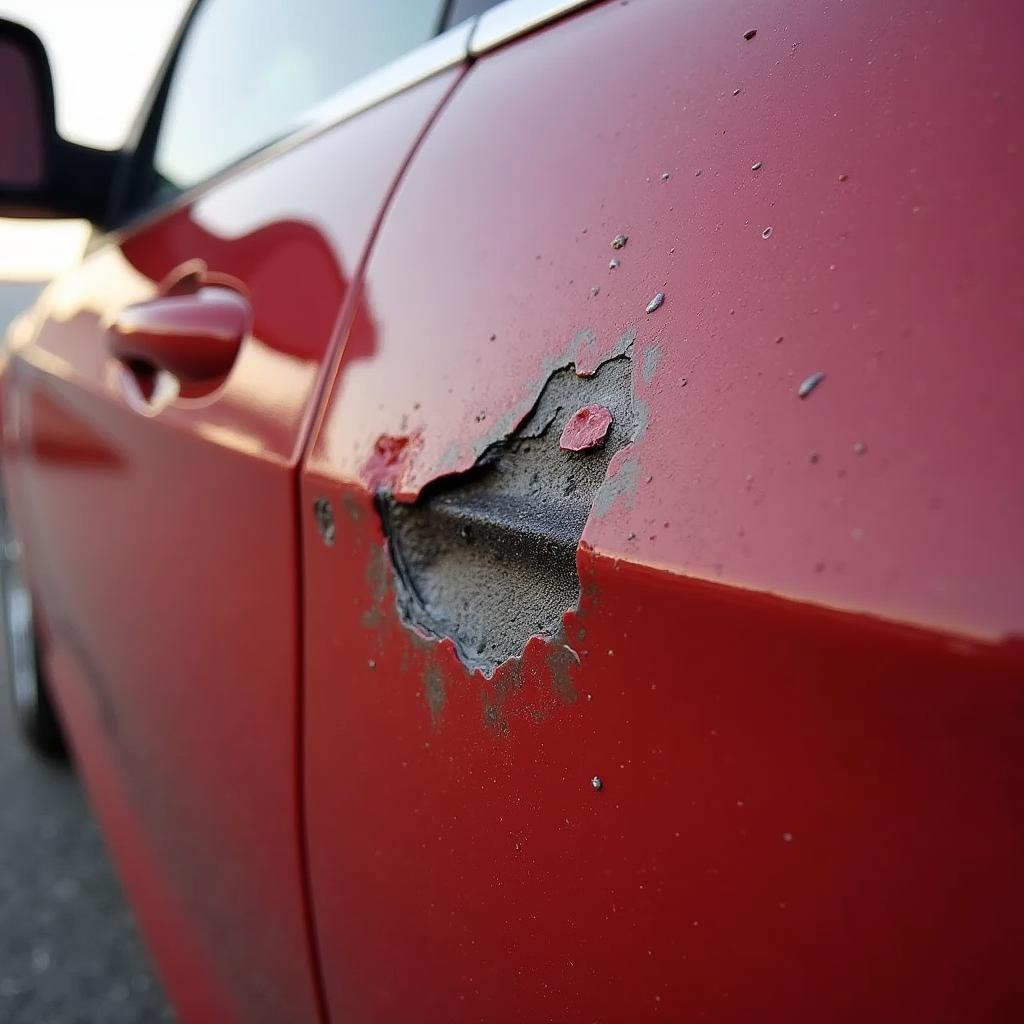Being hit by hail can be frustrating and costly. But did you know that the damage doesn’t stop at the surface? There are hidden problems that can surface later, potentially leading to more repairs and headaches.
This article will explore the potential future problems associated with hail damage. We’ll cover everything from hidden damage to long-term consequences, equipping you with the knowledge to make informed decisions about your hail-damaged car.
Understanding the Impacts of Hail Damage:
Hailstorms can inflict various degrees of damage, ranging from minor dents to severe structural issues. While visual damage is easy to spot, internal damage can remain hidden for months or even years, leading to unexpected problems down the line.
Here’s a breakdown of the potential problems:
- Body Panel Damage: Hail can cause dents and creases in your car’s panels. While some may be superficial, deeper dents can compromise the structural integrity, potentially leading to rust and corrosion over time.
- Paint Damage: Even if the dents are minor, the impact can cause cracking and chipping in your car’s paint. This exposes the metal underneath to the elements, increasing the risk of corrosion.
- Mechanical Damage: Severe hail can cause damage to your car’s hood, roof, and windshield. This can lead to leaks, compromised structural support, and even engine damage, especially if the hood or roof is severely dented and affects the engine compartment.
- Electrical System Damage: Hail can damage your car’s electrical system, especially if it impacts the antenna, windshield wipers, or other components. This can lead to malfunctions, short circuits, and even fire hazards.
Identifying Hidden Damage:
The most important thing is to thoroughly inspect your car for hidden damage after a hailstorm. Don’t just rely on what you see from the outside. Here’s what to look for:
- Structural Integrity: Look for slight warping or unevenness in body panels, especially around the doors, hood, and roof.
- Leaks: Carefully check for leaks in the roof, windshield, and windows, especially during rain or after a car wash.
- Electrical Malfunctions: Test all lights, wipers, and other electrical components to make sure they function properly.
Potential Long-Term Consequences of Hail Damage:
- Corrosion and Rust: As mentioned earlier, hail damage can weaken the protective paint layer, leading to corrosion over time. This can result in perforated panels, rust holes, and significant repair costs.
- Reduced Resale Value: A car with hail damage will have a lower resale value than a car without any damage. Even after repairs, a car with a history of hail damage may be perceived as less reliable.
- Increased Insurance Premiums: Hail damage can increase your insurance premiums as it makes your vehicle more susceptible to future damage.
What You Can Do:
1. Get a Professional Inspection: It’s crucial to have a professional auto body shop inspect your vehicle after a hailstorm, even if the damage seems minor. They can identify hidden damage and provide an accurate assessment of the repairs needed.
2. Don’t Delay Repairs: The sooner you address hail damage, the less likely it is to cause further problems. Waiting too long can lead to more extensive damage and higher repair costs.
3. Consider a Comprehensive Insurance Claim: If the damage is significant, consider filing a comprehensive insurance claim. This can help cover the cost of repairs and minimize your out-of-pocket expenses.
4. Document Everything: Keep a detailed record of the hail damage, including photos, repair estimates, and insurance claims. This can help you negotiate fair compensation for your repairs.
Expert Insight:
“It’s important to understand that hail damage is not just about dents and scratches. The impact can create unseen weaknesses in the vehicle’s structure that can lead to future issues. Even small dents can be a sign of a bigger problem,” says John Thompson, Certified Auto Body Technician.
Conclusion:
Hail damage can have significant consequences beyond the initial visual damage. By being aware of the potential future problems associated with hail damage, you can make informed decisions about your vehicle’s repair and maintenance, protecting your investment and ensuring your safety.
If you have questions or concerns about hail damage, contact us at AutoTipPro.
 Hail Damaged Car Close-up
Hail Damaged Car Close-up
Contact Us:
+1 (641) 206-8880
500 N St Mary’s St, San Antonio, TX 78205, United States
Frequently Asked Questions:
Q: Can hail damage be repaired without affecting the car’s value?
A: While repairs can restore the car’s appearance, it’s unlikely to fully restore its value. Insurance claims and history of hail damage can affect future resale value.
Q: What are the signs of rust developing from hail damage?
A: Look for small, brown spots or bubbles in the paint, especially around the edges of dents.
Q: How long does it take for hail damage to cause rust?
A: Rust can develop within a few months or even years, depending on factors like climate and the severity of the damage.
Q: Is it worth repairing hail damage if it’s just a few small dents?
A: Even small dents can expose the metal to corrosion, making it worthwhile to repair them.
Q: Can I avoid a comprehensive insurance claim for hail damage?
A: It depends on the severity of the damage and your insurance policy. Consult with your insurance agent to discuss your options.





Leave a Reply